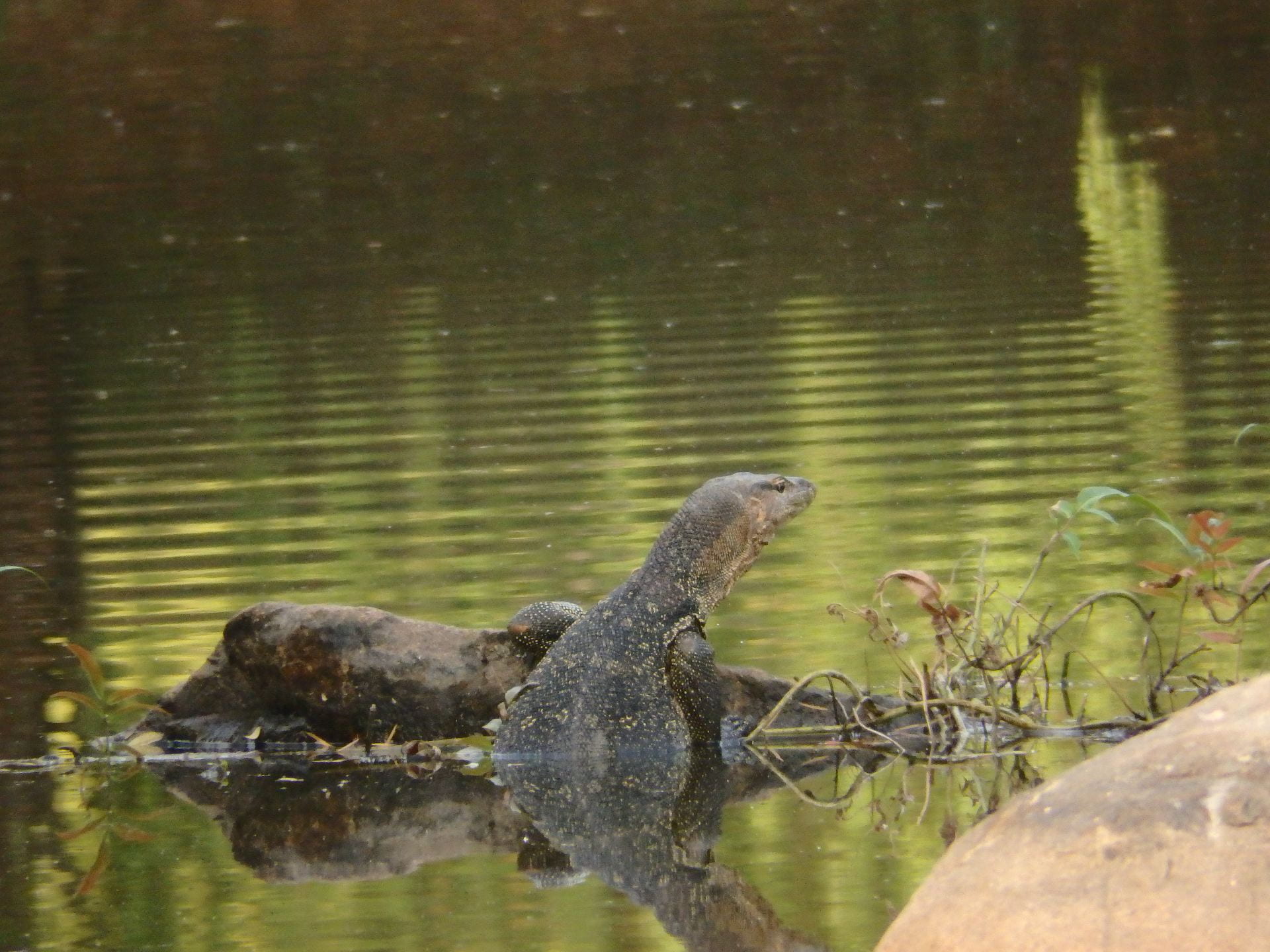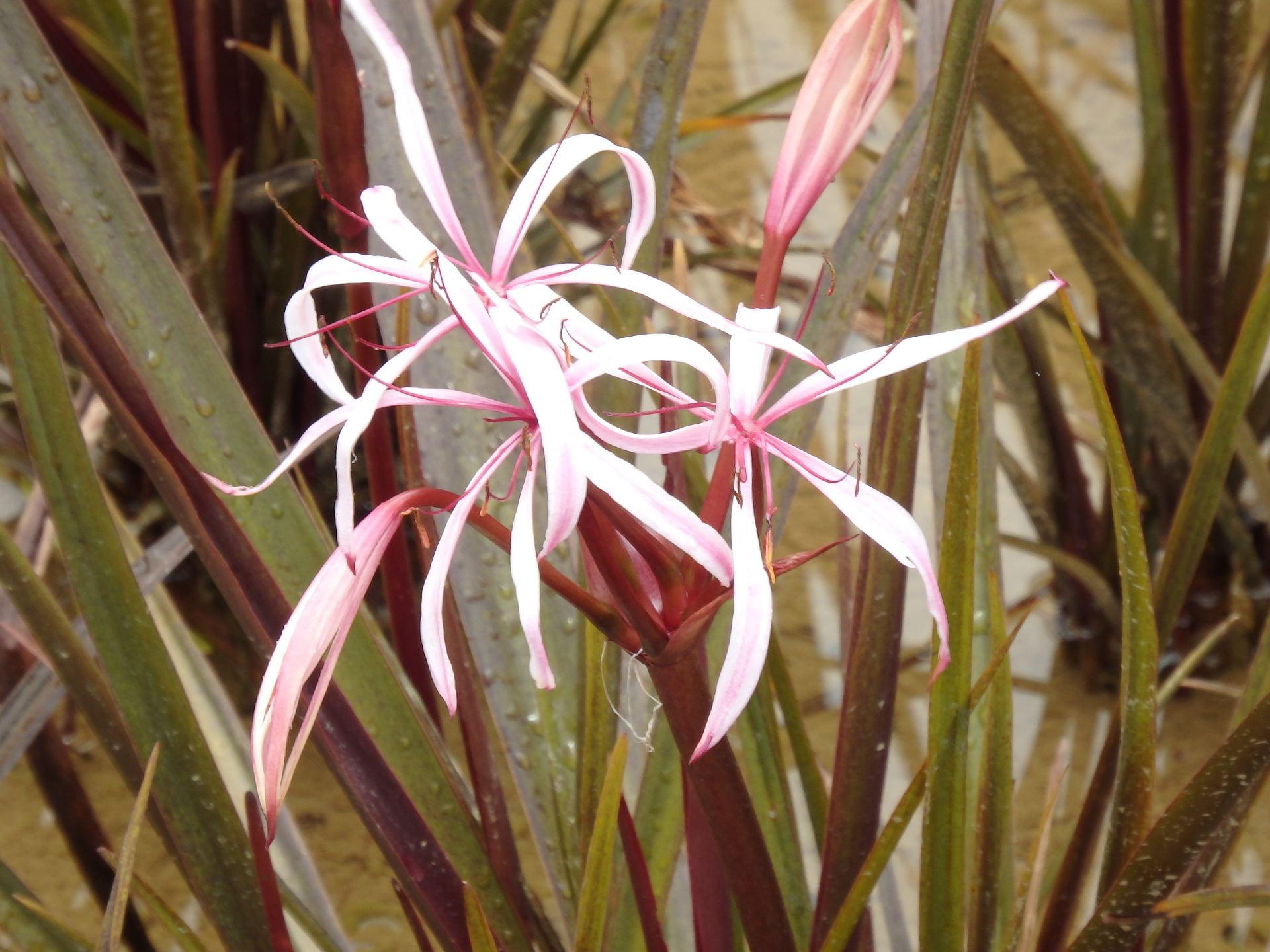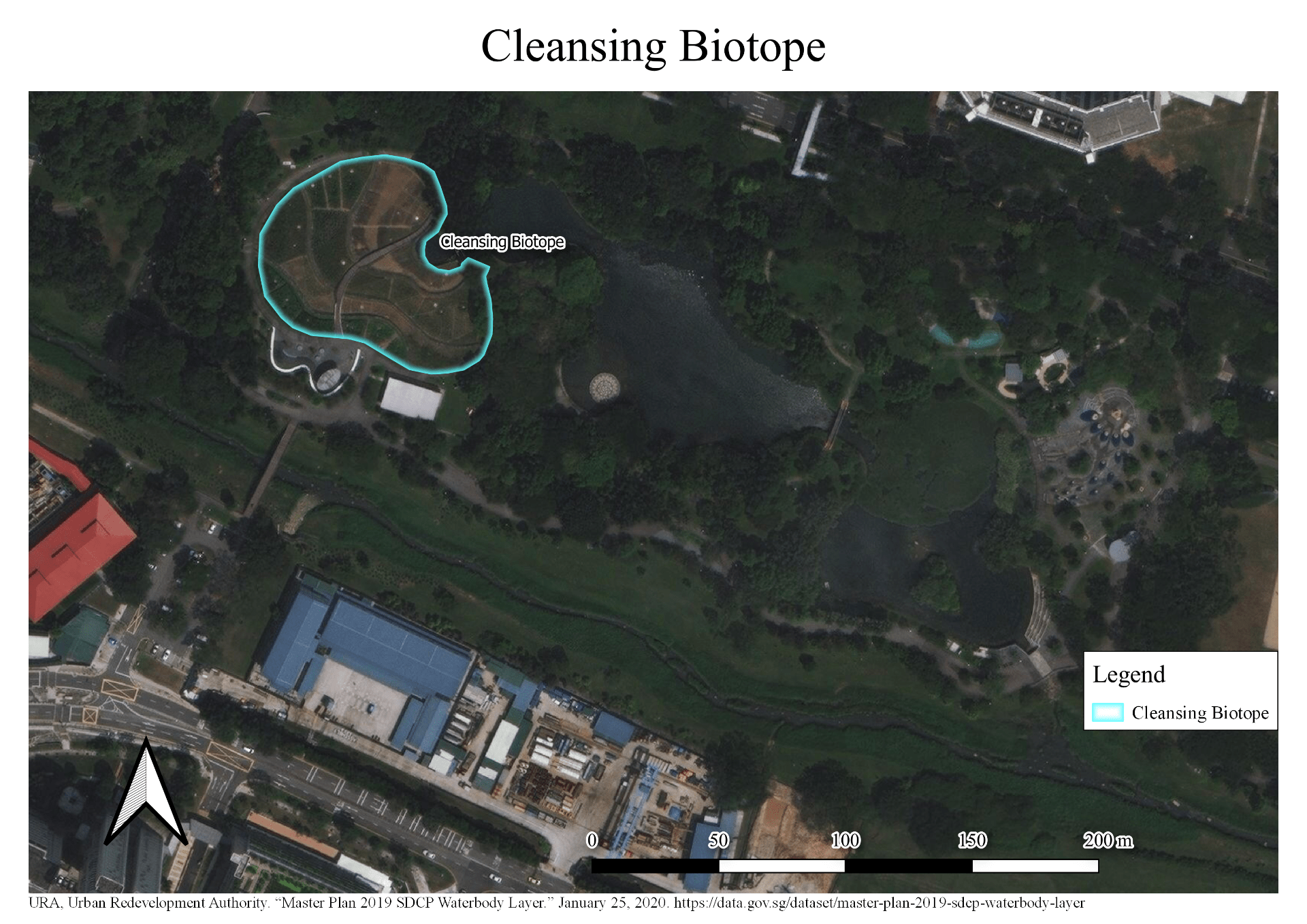It’s been a while since I last wrote on my blog, and in that time, I had an epiphany. Here I am learning about the environment, but most of my blog has been about technology. I’m not even an engineering major! So, guess what, I’m writing about water treatment in river restoration. I had a blast going to the Kallang River restoration project at Bishan-Ang Mo Kio Park on 27 February and having my eyes opened to what my blog has been missing out on. Plants! Animals! Biodiversity!

A cotton pygmy-goose (Nettapus coromandelianus) swimming in the retention pond supplied with water from the Cleansing Biotope. Image: Samuel Lee

A Malayan water monitor (Varanus salvator macromaculatus) in the same retention pond. Image: Samuel Lee

A Chinese pond heron (Ardeola bacchus) hunting for fish where the retention pond enters the Kallang River. Image: Samuel Lee
Machines and treatment plants are not likely to foster healthy ecosystems that frankly do a better job for less1 . The large number of trees, vegetated river banks, and biophilic water treatment features throughout the park work together to provide the habitats and regulate the water quality required to host a thriving riparian ecosystem. As a result, we get to enjoy the sheer variety of plants and animals that could never be found around many of Singapore’s concretized storm drains. For me at least, such havens within our urban sprawl is the embodiment of sustainable urban life.
One of the flagship water treatment solutions used is a Vertical Flow Constructed Wetland, also called a Cleansing Biotope. The park’s Biotope receives water from the downstream retention pond and the Kallang River, whereby excess nutrients are retained within the sediment media. Specific wetland plants are grown to ensure that the media remains permeable and cultivate a healthy microbial community that can break down excess nutrients2. Furthermore, the Biotope is broken up into cells with different “shifts” to ensure plants are not overwhelmed by excessive nutrients1 .

Swamp lilies (Genus Crinum) grown within one of the cells in the Biotope Image: Samuel Lee

An active cell currently receiving water. Image: Samuel Lee

An inactive cell current “taking a break”. Image: Samuel Lee
Ultimately, such a treatment system is specifically designed to “finish off” the treatment process of wastewater2 or to regulate high nutrient influxes from upstream1. To support this design theory, we compared the water quality of the Kallang River and retention pond linked to the Biotope and found no appreciable difference other than:
- Turbidity, which may have been due to ongoing weeding activities
- Dissolved Oxygen, likely due to standing water in the retention pond
Since the input water was already relatively clean, the Biotope may have been inactive.
While we did not get to see the Biotope at its best, where best could you find such a complement of water treatment solutions and earth control measures fostering a thriving ecosystem? Working with nature through river restoration and daylighting once underground streams have already allowed us to achieve much-needed increases in flood capacity to cope with higher rainfall from climate change1, bundled into an environmentally-resilient riparian ecosystem. What I’ve learnt from this field trip is that biophilic water treatment and earth control measures lie at the heart of river restoration in an urban environment. What Singapore needs now is the expansion of such river restoration efforts to ensure our waterways can become environmentally-resilient and thriving ecosystems.
- – Samuel Lee
Appendix
Table 1. Water quality data measured using a HORIBA water quality meter at two sampling sites: one at the Kallang River, and the other at the Bishan-Ang Mo Kio Park’s Cleansing Biotope. The water quality meter probe’s readings were allowed to stabilise for five minutes before readings were recorded.
| Parameters | Kallang River | Cleansing Biotope |
| Time (hrs) | 1358 | 1408 |
| GPS coordinates | 1.364721N 103.835390W | 1.3654752N 103.8360180W |
| Water Temperature (°C) | 31.49 | 32.36 |
| Air Temperature (°C) | 33.0 | 32.3 |
| pH | 7.42 | 7.62 |
| Conductivity (mS/cm) | 0.144 | 0.134 |
| Turbidity (ntu) | 4.9 | 32.1 |
| Dissolved Oxygen (mg/L) | 10.00 | 8.55 |
| Total Dissolved Solids (g/L) | 0.093 | 0.087 |
| Salinity (ppt) | 0.07 | 0.06 |
| Depth (m) | 0.15 | 0.35 |
References
1.PUB. 2018. “Active, Beautiful, Clean Waters Design Guidelines 4th Edition.” 4th ed. https://www.pub.gov.sg/Documents/ABC_Waters_Design_Guidelines.pdf
2.Tilley, Elizabeth, Christoph Lüthi, Antoine Morel, Chris Zurbrügg, and Roland Schertenleib. 2008. Compendium of Sanitation Systems and Technologies. Development. www.iwa-network.org/wp-content/uploads/2016/06/Compendium-Sanitation-Systems-and-Technologies.pdf

